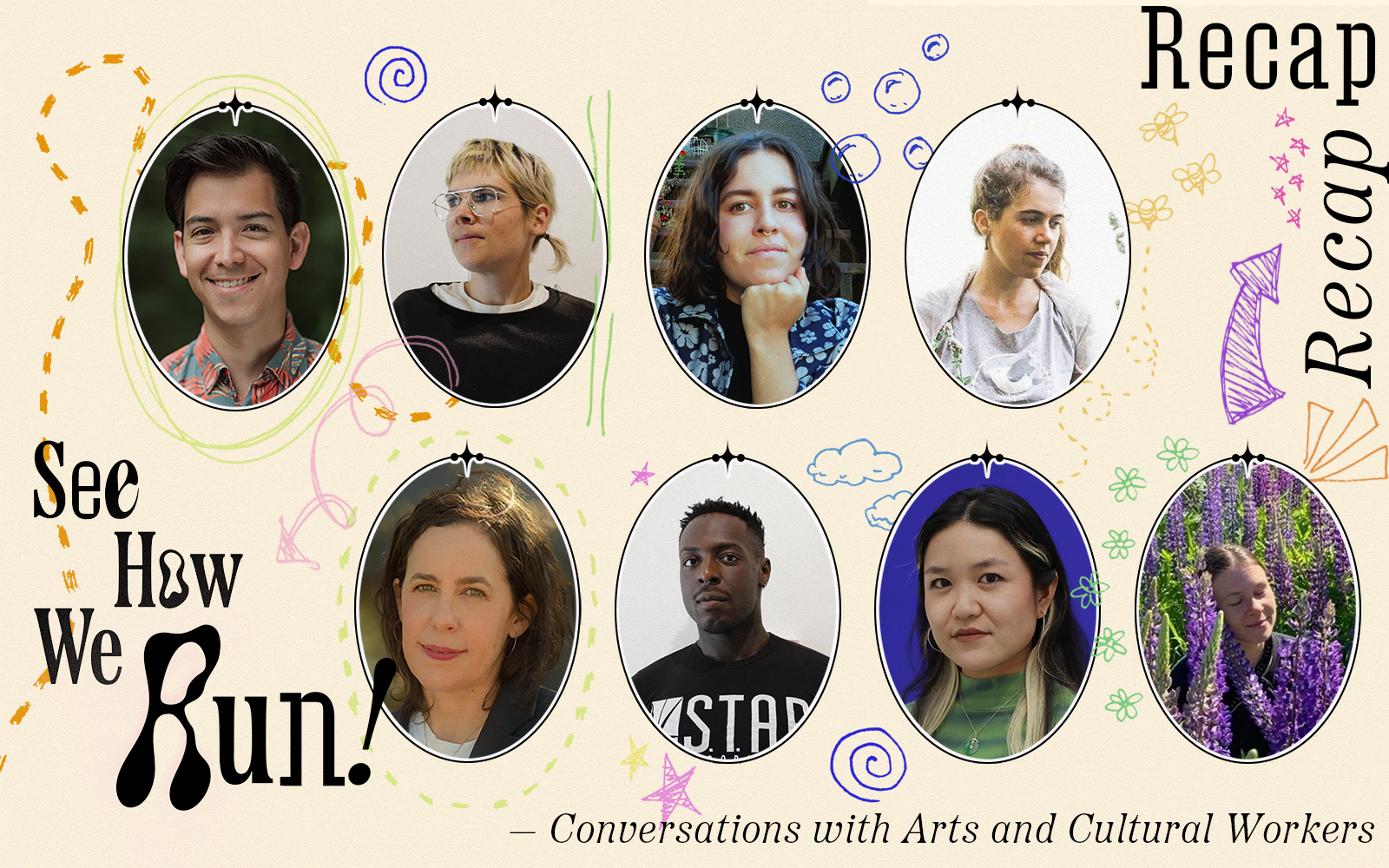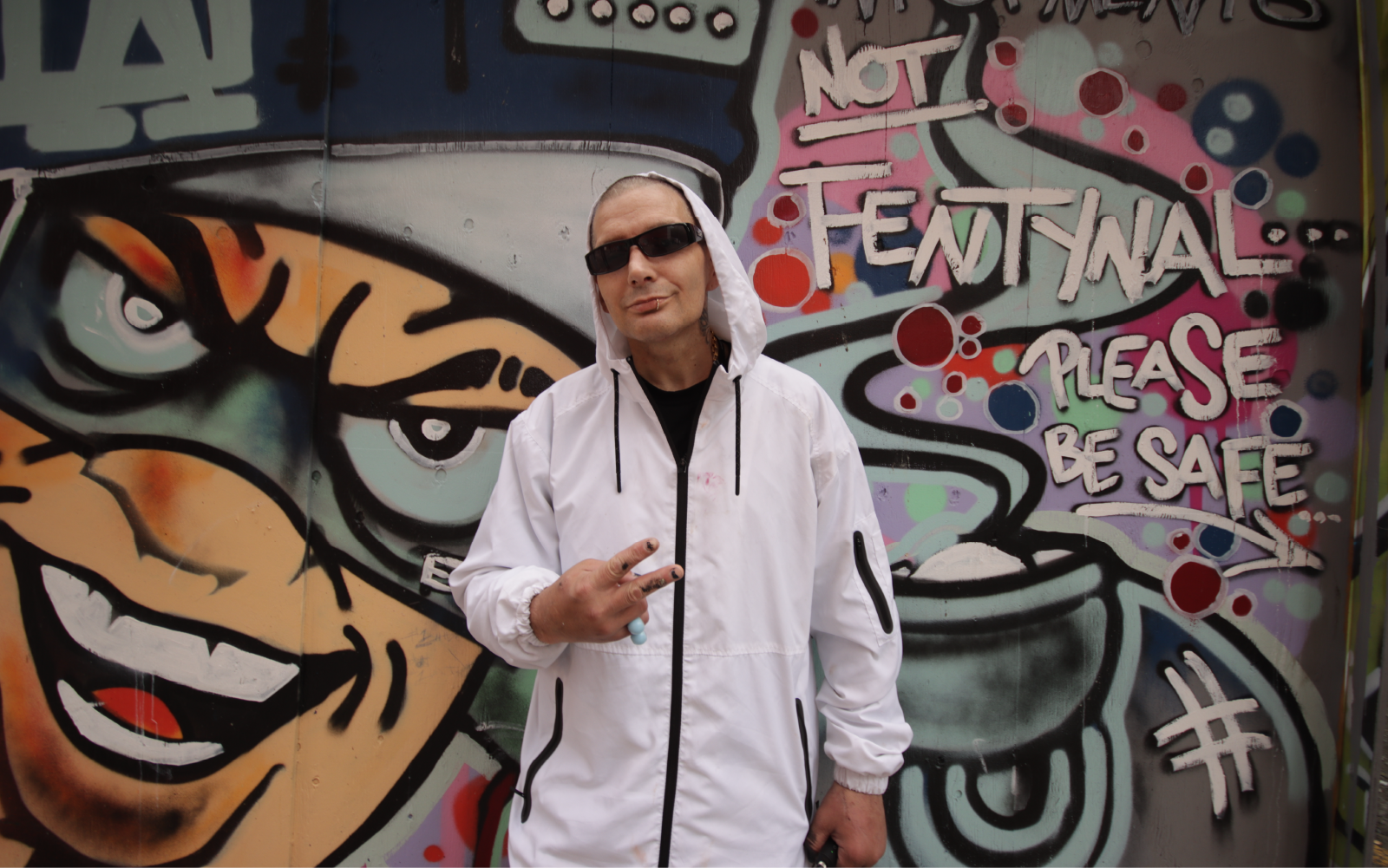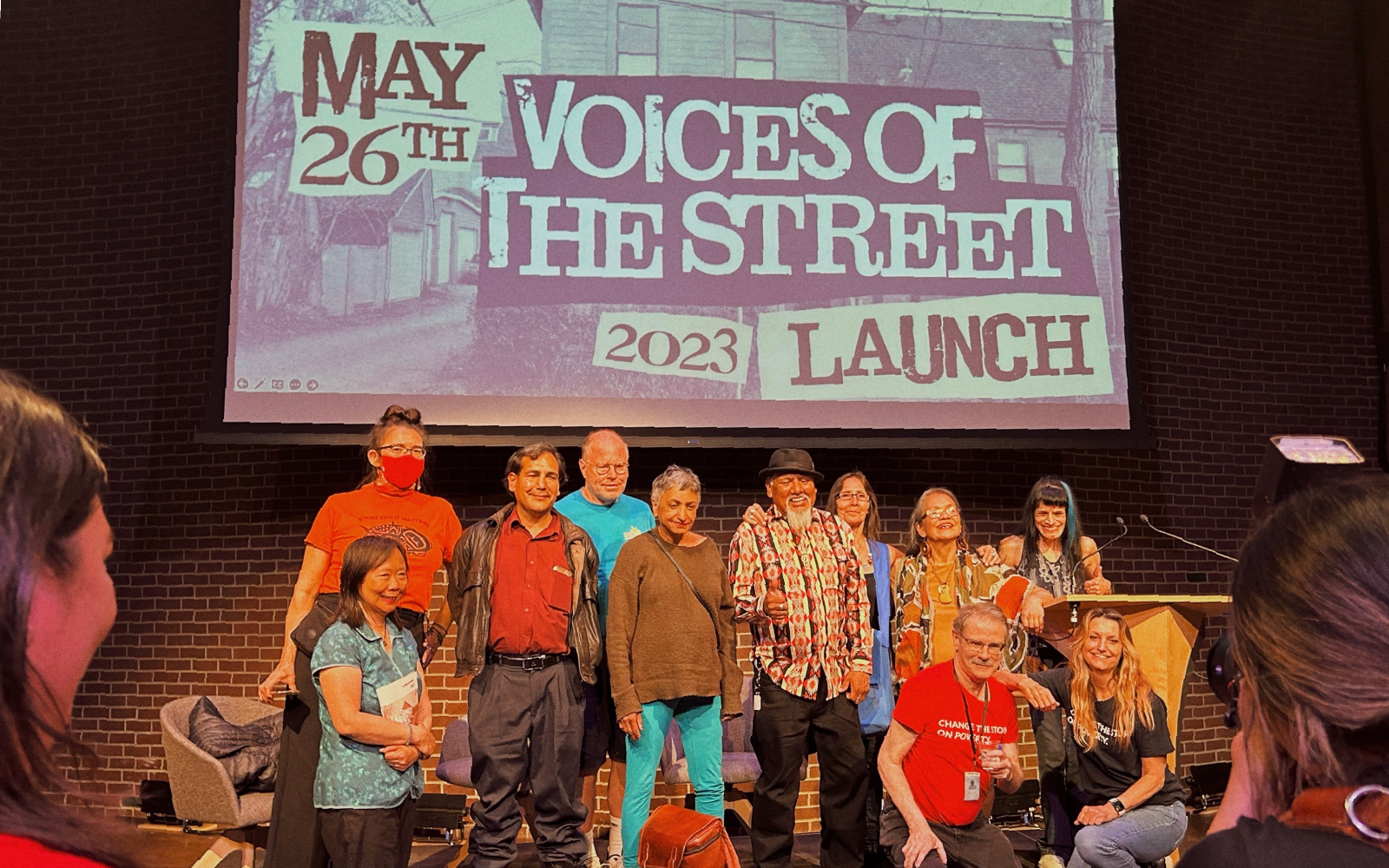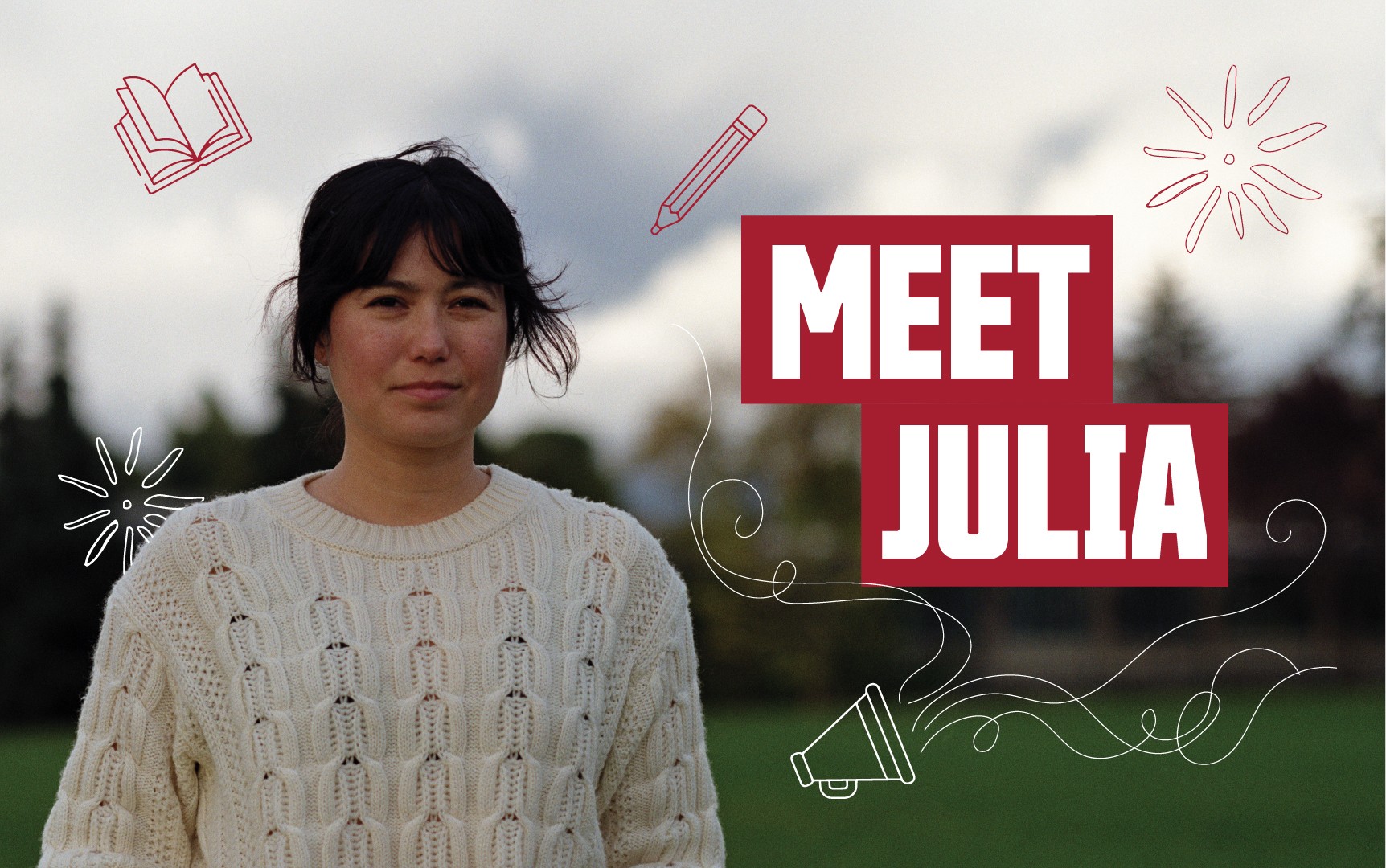Article
Whose City is it Anyway?
This is an edited transcript of Am Johal’s presentation at Pandemics & Long-Range Planning on September 30, 2020. The online event was part of Pandemonium: Urban Studies and Recovering from COVID-19, a lecture series presented by SFU Urban Studies in collaboration with SFU Public Square.
Whose city is it anyway? Who does it embrace, who does it marginalize, and who does it push away from legibility? Whose bodies matter and whose don’t? Is the ‘Right to the City’ just words on a page? Or are we an Apartheid city, as former UN Special Rapporteur on Housing Miloon Kothari famously called Vancouver a few years ago?1
In his essay some years ago, “How High is the City, How Deep is Our Love,” Jeff Derksen wrote, “We are often reminded that we love the city, that intimate aspects of ourselves course through the veins of the city we live in, and that a deep affection binds us to the space and places of our city. And we do love cities; our lives are wrapped in and through the spaces and textures and possibilities of our urban experience… through the discussion of what is possible in a city, we slowly build up the city’s identity and life.”2
Crisis and recovery can inspire utopian forms of thinking as the capacity to imagine a future that departs significantly from what we know to be a general condition in the present. Today, there is indeed a desire for urgency and disruption and upheaval that the moment calls for. We can’t go back to addressing a crisis with a little bit of Keynesian politics sprinkled here and there3 — something more fundamental is being asked for by the moment. The fork in the road was passed a long time ago.
“The amnesias of colonialism still pulse through the city and set the tempo for its limited field of vision.”
Within the COVID-19 crisis, there is the opportunity to reaffirm, adjudicate, and jettison values and expand the sphere of imagination within the everyday experiences of the city. This was certainly the case following the First World War and after the influenza pandemic of that time and again following the Great Depression and the Second World War. Entire neighbourhoods in Vancouver were built with federal government investment. Planning can operate in extremely opportunistic ways. It can bring about colonialism and the Manhattan Project, but it can also bring us public healthcare, social housing, pensions, and unemployment insurance. What to make of planning at a time when the world is digitized, financialized, and ecologically brutalized?
The possibility of the total mobilization of the state helped reconstitute the field of planning, but it still reeks and performs a parochial transactionalism today. Mike Harcourt likes to tell the story that most of the Vancouver planning department management still had British accents in the early ‘70s. The amnesias of colonialism still pulse through the city and set the tempo for its limited field of vision. Indigenous led planning and development like the Sen̓áḵw development and others will fundamentally reshape and replan the city with new ways of thinking.4
The world is a slippery place and fundamentally reimagining the future only happens in exceptional times, but the possible movement from transactional planning to transformational planning in such a short period should be welcomed.
The Problem of the State
How do we think beyond and around the state and the pantomime of politics that shape planning? We need to think from within the lived experience of the city and its inhabitants and not be bound by the narrow frame of linear rationalism and colonial inertias that the thought of planning is often built upon. In times of crisis, “All that is solid melts into air.”5
There are some questions to pose in the present crisis — and the possibility of a transformational planning to come that functions at the scale of the problems we now face.
What form of planning can be articulated and called upon to defend a public interest in times of multiple crises in the near future beyond the one we’re in now? We live in cities with racial and economic injustice as built-in forms of peripheralization that follow from centralized planning decisions made upon flawed assumptions.6
In the margins of cities, one can see the collateral damage that poor planning has done in not dealing with the pace and scale of capital flows through the city. The human cost is traumatic and devastating — we don’t need to look further than the effects of fentanyl contamination deaths7 and tent cities.8 Indigenous and Black Lives Matters protests are erupting into public space that were decades in the making. Hiding behind the façade of professional rhetoric in the transactional forms of planning that play out every day in urban centres does little other than reproduce the status quo and move the so-called problem around in public space. Cities need more resources and regulatory power to work around intergovernmental stalemates. Crises perpetuate surveillance tendencies of states and the policing of bodies. The next uprisings will also emerge in the suburbs too.
“Planning departments need to be as diverse as the cities they plan for. Not much will change without that prerequisite taking place.”
The problem is structural inequality. For too long in the region, planning and politics in the service of capital have reproduced and accelerated divides as a normal state of affairs. The disconnection between incomes and housing costs in our cities is but one example. We need to look at new forms of urban Indigenous governance and the direct Indigenous community governance of social service delivery in urban centres. Planning departments need to be as diverse as the cities they plan for. Not much will change without that prerequisite taking place.
80% of Canada’s population live in urban centres.9 How can the pandemic, climate crisis, and future crises be planned for and how should recovery be imagined? Whom should it be for and how should it land down? Who determines what the recovery looks like and on what terms it rolls out and its intended effects? For most people, these processes of decision-making are happening in the backroom without appropriate forms of engagement. Planning can’t be done in a closed room without involving the inhabitants of the city, regardless of their status. Who are we responsible to and who are we held accountable by?
The problem of the state is central to any view of planning. For too long, the thinking of planning and its itinerant theories have been sutured to the state, creating a fundamental closure of thinking of what is possible. How can planning rethink its relationship to the state and land politics generally, particularly in urban contexts where originary colonial land theft is an ongoing reality? Giving back concrete parcels of land to the original inhabitants as part of a process of urban justice and decolonial practices has to be part of that conversation in material terms.
The urban arena still has the capacity to be an incubator of radical ideas and propositions. The very possibility of liberation within crisis asks a deeper moral question of how to think of a response to crisis outside the state as a place to imagine the radical outside. If the state is the only actor in the response defining the limits of the recovery, then we are ultimately dealing with a parochial form of centralization that is, unfortunately, baked in with democratic deficits and will exacerbate and accelerate polarization. There needs to be the possibility of agency, participation and decision-making by the inhabitants of the city rather than just being passive recipients of delegated authority from above.10
On Resilience
‘Resilience’ might just be the bullshit word of the moment. Alternatively and more precisely, what does a planning that centres social solidarity and social justice look like? If we don’t build in the participation of those communities directly affected by decisions, ultimately, regulatory force and power decides the outcome. Planning, when done well, ought to be about reconfiguring power and challenging the surveillance and policing tendencies of state and public bodies.
When the pandemic arrived, the existing social safety net was already stripped bare. Who gets to imagine what a recovery looks like — who is in the room? Is contact tracing possible when people don’t have a home or a phone? Our public health professionals took a while to land down on whether wearing a mask or not is effective. When public information isn’t transparent, trust is eroded.
Public health approaches have benefits, but also limitations inherent to centralized forms of planning. Polarization is inevitable and toxic forms of populism are unleashed. Planning has to be more highly attentive to the production of new solidarities, particularly those that emerge from the periphery.
“Planning, when done well, ought to be about reconfiguring power and challenging the surveillance and policing tendencies of state and public bodies”
Access to information is limited and isn’t multi-lingual. Some can self-isolate. Charity-based food systems are problematic. Planners love to build their way out of a problem — how can we think beyond bricks and mortar solutions? Where’s the guaranteed annual income that’s needed? $375 is the shelter rate of social assistance.11 There are over 7,000 SRO (Single Residence Occupancy) units in Vancouver and very few of them rent at the shelter rate.12
If this crisis was a test-run for a major seismic event, then it means we’re not prepared. On the whole, the assessment on the ground is that It’s been a very disorganized approach. Government agencies weren’t nimble. Its systems are structured on distrust that is couched in an accountability lens. Vancouver Foundation, Vancity, United Way and others got $17 million out the door quickly. Governments need to pare down systems and focus on empowering community organizations. Communities need to lead and have government support them. Planning needs more humility not assertiveness.
Exuberance and Joy in the City
Bringing exuberance, joy, and the good life back to the city for all is of central importance — this requires planners and planning to get out of the way. In the wake of the pandemic, people are drinking in parks, inhabiting public space in new ways, patios are enlivened and all of a sudden, forms of urban funk hitherto unimaginable in the protestant nanny state of Vancouver and its overdone, over-regulated liquor laws has turned overnight and accepted a messiness that was existing only in other places.
People want more permissiveness in the city to let us be ourselves. What’s next — dogs on patios! Invest in the social infrastructure of arts and culture — that’s where the solidarity and poetry of the city resides, and the working-through of difference, takes its audaciously proper form. We want to live in a city that bites back, that fights back, that loves back, that gives back.
All great societies are built on loitering. We want a city where we can loiter, linger and spend time in the places we love.
The Future of Suburbia is Urban
The recovery needs to have investment in the suburbs, especially south of the Fraser, places like Surrey in Metro Vancouver — and Brampton in relation to Toronto — are the future. The largest urban Indigenous community in Metro Vancouver is in Surrey and the city will be larger than Vancouver within the next decade.13 There is explosive growth, but where is the investment in the social glue that binds communities together? Green infrastructure, public transportation, and new forms of urbanism and density need investment in growing suburbs. Density makes public transit efficient. All the precepts of sound urbanism like compact communities, transit-oriented or pedestrian-oriented development or 15-minute communities make sense intuitively.14
But here lies the caveat — these moves can actually exacerbate peripheralizations and leads to the politics of displacement and gentrification. It can reproduce and accelerate inequality in the city. These urban processes privilege access to capital so the benefits aren’t shared. Ever wondered why there are so many real estate billionaires in a small town like Vancouver?15 What happens when people get displaced from dense urban centres and end up commuting from Langley, Abbotsford, Whalley — like many students have done.16
It’s all well and good to double down on urbanism in a time of crisis, but how does planning deal with that fundamental contradiction that accelerates peripheralization? What does a progressive land-value capture tax look like in practice?17
The Future of Work and Ascribing a Value to Uselessness
Working from home and other possibilities of technology are differentially experienced. What does this mean for the future of work? Everyone’s home lives are different, but the interruption of the past few months have shown the upside and downside of this experiment — and real challenges to mental health haven’t been fully understood. There is a class dimension that is clearly present.
We also, importantly, have a right to define our lives as something that exists outside of work. The challenge to the movement of bodies in space and time in the pandemic context, as part of the everyday life in the city and its libidinal choreographies, erodes social life at its very foundations. The absence of the spontaneous accidents of running into people takes away the magic of the everyday.
We are indeed living simultaneously through the death of an era that was unsustainable and the birth of a new one. There is today an amnesia regarding the upheaval of the world created after World War Two.18 We are grappling with the existential threats of climate change and global scale computation and the threats to sovereignty that they pose, just as the possibility of nuclear war hovers over us as a hangover from the last century.19 And toxic forms of populism, nationalism, and hatred are all around us and never went away.
Humans have proven to be a highly adaptable species that thrive on cooperation even through the deepest divisions and difference. Democracy relies on the messiness and contingency of dissensus not consensus — it’s in our very capacity to live through difference that new solidarities emerge. But to imagine planning in a way that doesn’t place sufficient value on both solidarity and dissensus — that leaves social, environmental and racial justice on the backburner. It is not going to be able to hold the tectonic shifts that are happening all around us. There’s a younger generation that is ready to overthrow the system and we should welcome them with open arms.
Towards an Insurgent Planning
It is possible to inhabit a zone of irresponsibility, of messiness, of a resistance to capture and categorization that can coincide with a confrontation with a power whose time has passed. Insurgent planning, when done well, can be a disciplinary practice geared towards a new solidarity, a shared consciousness, a responsibility to an identity beyond oneself — a site where legitimate and illegitimate grievances can be dealt with. Insurgent planning can be a place and practice where regimes of thought can be toppled, a site where the porousness of ideas moving in and out can have location and orientation, and material facts on the ground can be reassembled.
How high is the city and how deep is our love? How can we be together and how can we be in common in spite of difference. This is where the work of love for the city and solidarity as a moral position and a practice comes to be as a site of critical practice. And if we can’t be in common, how can we still live together? What, through difference, binds people together in common beyond the shared geography and suffering of a given place.
This is the work for all of us — and if it is to be actualized, it must be done in the everyday with joy, love, poetry, fidelity, ferocity, generosity, velocity, and solidarity.
Watch the video recording from PANDEMONIUM: Pandemics & Long-Range Planning to see Am deliver his presentation as a panellist.
Resources and Further Readings
Am Johal, “Vancouver Housing Crisis ‘Worse on Virtually Every Level,’ Says Former UN Investigator,” The Tyee (2017);
“The Right to Housing and the Vancouver Situation” (2017), a talk by Miloon Kothari.Jeff Derksen, “How High Is the City, How Deep Is Our Love,” Fillip, Issue No. 12 (2010).
For further discussion of Keynesian economics:
Watch the recording of the book launch for In the Long Run We Are All Dead by Geoff Mann;
Listen to “Keynesian Economics and the Hope for Climate X — with Geoff Mann” on Below the Radar.Learn more about the Sen̓áḵw Lands development project by the Squamish Nation;
Watch the video from “Decolonizing the City: the Future of Indigenous Planning in Vancouver.”A quote from Marx and Engels’ Communist Manifesto.
Hear more about racialized displacement in an urban context by watch the recording of the book launch for Matt Hern’s What a City is For (MIT Press, 2016).
Listen to “Fentanyl Contamination Deaths during COVID-19 — with Garth Mullins” on Below the Radar.
Stefania Seccia, “Rethinking Tent Cities as a Help in Housing Crisis, Not a Nuisance.” Megaphone Magazine (2017).
“In 2019, 81.48 percent of the total population in Canada lived in cities,” according to the report, “Urbanization in Canada 2019,” published by Statista.
For more on inclusion in urban spaces and governance:
Listen to “Making Our Cities More Inclusive — with Tiffany Muller Myrdahl” on Below the Radar;
Watch the video recording of “Women Diversifying Cities: Dare to Run.”Social assistance rates in BC, effective April 1, 2019.
Read Downtown Eastside Community Vision for the 100 Block of East Hastings, a report by the Carnegie Community Action Project;
In 2019, the City of Vancouver’s housing progress report stated, “The City has approximately 7,200 Single Room Occupancy (SRO) rooms in 159 buildings, primarily in the Downtown Eastside, and over half are privately owned. From 2015 to 2017, the percentage of the privately-owned SRO stock renting for $375 fell from 17% to 15%.”;
Listen to “End the Drug War — with Eris Nyx” for further discussion of SRO housing during the COVID-19 pandemic with community organizer Eris Nyx, from the Downtown Eastside SRO Collaborative.“Bob Williams on Surrey, ‘building and designing a city that is dynamite,’” on the blog for SFU’s Vancity Office of Community Engagement (2017)
Watch the video recording of the event, Bob Williams: Why Surrey is the Future of BC (2017)Nina Dragicevic, “Pedestrian-friendly cities making comeback as pandemic reframes daily life.” rentals.ca (2020)
Watch “The Human Right to Housing — with Leilani Farha” on Below the Radar for further discussion of housing during COVID-19 and the financialization of real estate.
Andriana Lanj, “I Commute from the Suburbs. Is Anyone Thinking of Folks Like Me?” The Tyee (2019).
Paul Finch, “In Defence of Vancouver’s Proposed Land Value Tax.” The Tyee (2019).
Listen to “The Climate Emergency and Political Action — with Seth Klein” on Below the Radar. Seth Klein discusses his recent book, A Good War, which examines political actions the Canadian government undertook in reaction to World War Two and how they might inform our response to climate change.
Listen to “This Atom Bomb in Me — with Lindsey Freeman” from Below the Radar, where Lindsey Freeman speaks to growing up in the Manhattan Project secret city of Oak Ridge, Tennessee.
Related Updates
-
February 19, 2025

February 19, 2025
On behalf of SFU’s Vancity Office of Community Engagement, we wanted to take the time to say that we have been overwhelmed and deeply touched by the voices of love, solidarity and support that have been shared since the announcement of the closure of our office on January 22, 2025 by SFU.
-
January 10, 2024

January 10, 2024
Our Below the Radar podcast mini-series See How We Run! looked at local arts collectives and organizations, highlighting conversations about creation, spacemaking, accessibility, and self-determination within the framework of Vancouver’s cityscape.
-
July 20, 2023

July 20, 2023
On June 29, 2023, 200 people turned out for the world premiere screening of Smokey Devil: Underworld Street Reporter, a feature length documentary by Nathaniel Canuel, co-hosted by SFU’s Vancity Office of Community Engagement.
-
June 13, 2023

June 13, 2023
Released every spring, Voices of the Street (VOTS) is a compendium of writing by Megaphone community members, a space for exploration of creative expression through language.
-
March 21, 2023

March 21, 2023
We are delighted to welcome Julia Aoki as Program Manager at SFU’s Vancity Office of Community Engagement!



